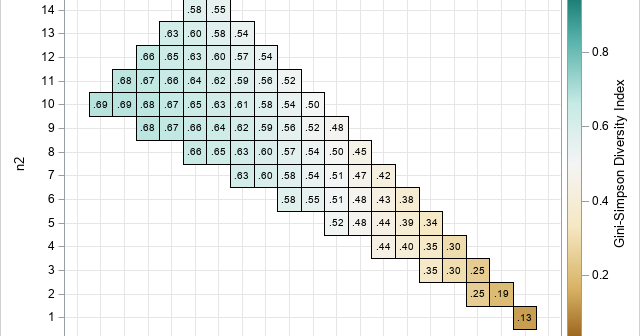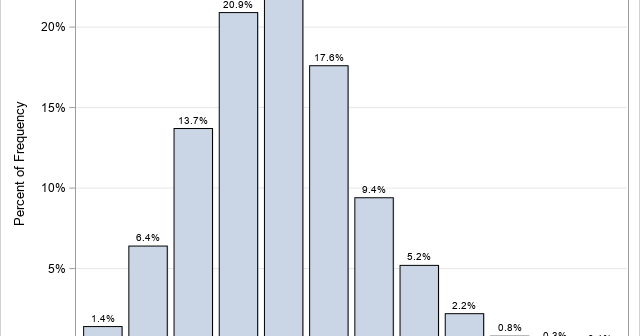The DO Loop
Statistical programming in SAS with an emphasis on SAS/IML programs
On social media, a SAS user reported that SAS could not compute the modulo of an extremely large integer. In SAS, the modulo operation is usually performed by using the MOD function, which computes the remainder of dividing an integer, N, by another integer, d. (In symbols, the remainder is

A previous article discusses the Gini-Simpson diversity index and how to compute it in SAS. Suppose you have a sample that contains R classes. (Classes are also called groups or categories.) Intuitively, the sample exhibits "high diversity" if the class sizes are approximately equal. The sample shows "low diversity" if

An article by David Corliss in Amstat News (Corliss D. (2025) "Quantifying Diversity: Calculating the Gini-Simpson Diversity Index") discusses a new statistical measure of diversity that was adopted by the US Census Bureau. The statistic is called the Gini-Simpson diversity index. The Census Bureau has published an article about how

When you use the bootstrap method in statistics, the most common resampling method is called case resampling. For data that has N observations, each bootstrap sample is created by sampling with replacement from the N observations (or "cases") in the data. However, if the data set includes categorical variables, it

A recent article describes the main features of simulation by using the Synthetic Minority Over-sampling Technique (SMOTE). SMOTE was created to oversample from a set of rare events prior to running a machine learning classification algorithm. However, at its heart, the SMOTE algorithm (Chawla et al., 2002) provides a way

The Synthetic Minority Over-sampling Technique (SMOTE) was created to address class-imbalance problems in machine learning algorithms. The idea is to oversample from the rare events prior to running a machine learning classification algorithm. However, at its heart, the SMOTE algorithm (Chawla et al., 2002) is essentially a way to simulate
